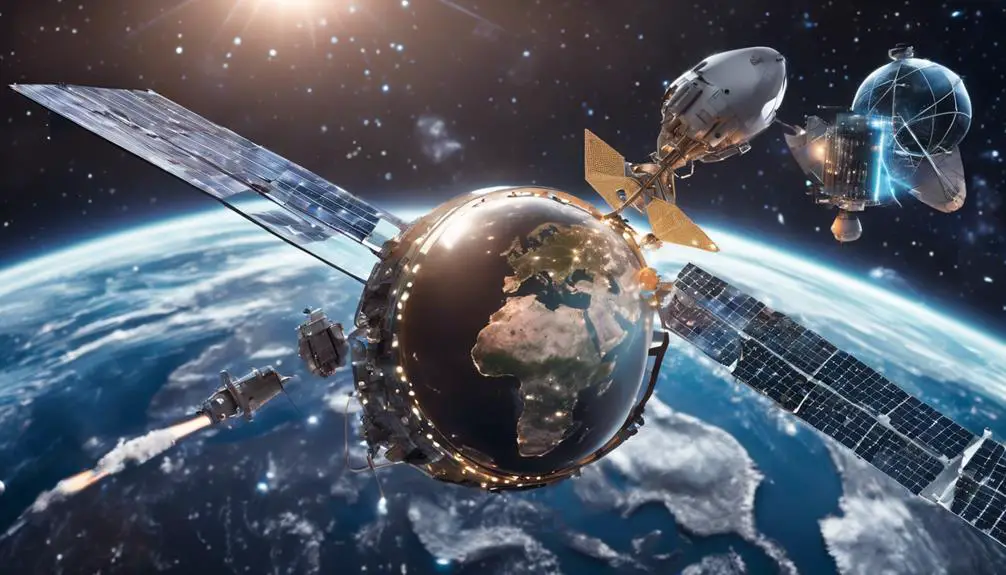In a world where streaming video, Zoom meetings, and cloud workspaces have become the fabric of modern life, losing internet—even for a few seconds—can feel like a system failure. And for millions in rural America, dense forests, or remote coastlines, this frustration is a daily reality.

That’s exactly what SpaceX’s Starlink is trying to fix—with its newest major update: Beam Switching. Quietly launched in late July 2025, this update doesn’t just enhance internet performance—it rewires how connectivity is delivered in difficult conditions.
Let’s dive into what makes this update a landmark step not just for Starlink, but for the entire satellite internet industry.
What Is Beam Switching—and Why Is It Revolutionary?
Traditionally, satellite internet dishes lock onto a single satellite for extended periods. Once locked in, they don’t switch unless forced to—say, when the satellite moves out of range or the signal drops. This has always made satellite internet highly vulnerable to obstacles like trees, poles, or buildings—even momentary obstructions.
But with Beam Switching, that paradigm is flipped.
Now, Starlink dishes dynamically evaluate and switch satellite connections up to 10 times per second—every 100 milliseconds. That means the terminal doesn’t just wait for a problem; it predicts it and reroutes your data traffic in real time to maintain signal strength, even when the dish’s line of sight is partly blocked.
It’s like having an autopilot for connectivity, and it works even when you’re on the move.
The Technology Behind It: Smarter Hardware, Smarter Sky
The power behind Beam Switching lies in Starlink’s phased-array antennas—flat panels that electronically steer their beams instead of physically rotating. These antennas can scan the sky rapidly and calculate, in real time:
- Which satellites are currently visible
- Which have the clearest path
- How performance might degrade in the next moment
In doing so, your Starlink dish builds a constantly updating 3D map of its surroundings. Trees that sway in the wind, a passing truck, or even a new branch growing across the field of view—all get factored into its decisions. The system doesn’t just react—it learns and adapts, constantly maximizing link quality with zero action from the user.
This capability is powered by onboard AI inference chips, allowing each terminal to make decisions at the edge, without relying on cloud latency.
Why This Update Is a Lifeline for Rural, Remote, and Mobile Users
For most urban Americans, “slow internet” means buffering on Netflix. But for the 14 million Americans without access to wired broadband—and tens of millions more living under dense tree cover—spotty service can mean no job, no education, and no emergency response.

Beam Switching is aimed directly at solving that.
Real-world benefits include:
- High-speed internet in partially obstructed zones (e.g., wooded backyards, mountainside cabins)
- Mobile use while driving or boating without signal drops
- No more need to cut down trees just to stay online
A Starlink user in Oregon who previously experienced dozens of 3–10 second outages per hour due to forest canopy now reports “no noticeable dropouts” post-update.
It’s not magic—it’s math, hardware, and satellites working together at machine speed.
Performance Snapshot — August 2025
Here’s what we know so far, based on internal metrics and early user data:
| Feature | Value (Post Beam Switching) |
|---|---|
| Satellite Handoffs | Up to 10 per second (10 Hz) |
| Switching Latency | Under 100 ms per switch |
| Uptime in Partial Obstruction | ~99.9% |
| Median Download Speed (U.S.) | 200–220 Mbps |
| Latency | 25–30 ms |
| Total Satellites Online | 8,070+ in active orbit |
That 10 Hz switching rate isn’t just fast—it’s industry-defining. No other satellite provider (or 5G or LTE network, for that matter) offers real-time dynamic beam redirection at that pace.
Starlink App: Now an Intelligent Installation Tool
Starlink didn’t stop at the backend. Its smartphone app now includes tools that make Beam Switching visible to the user.

- Install Site Scanning: Point your phone and see where obstructions may block signal.
- Live Obstruction Overlay: Real-time visualization of what’s interfering with performance.
- Micro-Uptime Tracking: View outages longer than 100 ms logged as events.
You don’t need to be an engineer. The app helps you optimize your installation or troubleshoot issues using the same high-frequency data the terminal sees.
How Starlink’s Network Made This Possible
This level of performance is only achievable because of Starlink’s dense, low-Earth orbit (LEO) satellite constellation. As of August 2, 2025, more than 8,000 satellites are actively in orbit—each flying just ~550 km above Earth.

This low altitude reduces latency and increases the number of visible satellites from any single point. While traditional GEO satellite providers (like HughesNet) offer just a few options in the sky, a Starlink user terminal might see 30+ satellites at any given time.
That redundancy is key to switching so often without affecting service quality.
The Future? AI-Defined Networks in the Sky
Beam Switching is only the beginning. Elon Musk has hinted that future firmware updates could add:
- Predictive link selection based on weather data and traffic models
- Peer-to-peer satellite routing to reduce dependency on ground stations
- Advanced load balancing to avoid congested orbital lanes
This is where Starlink starts looking less like an ISP—and more like a self-healing, global digital nervous system.
Final Takeaway
With Beam Switching, Starlink didn’t just patch a performance hole—it rewired the way we think about satellite internet. For users surrounded by trees, constantly moving, or living on the digital fringe, this is the difference between being connected and being forgotten.
And the best part? It’s already live. No new hardware required. Just update your firmware—and let your dish think for itself.
The future of internet isn’t fiber. It’s flexibility. And the sky is wide open.
